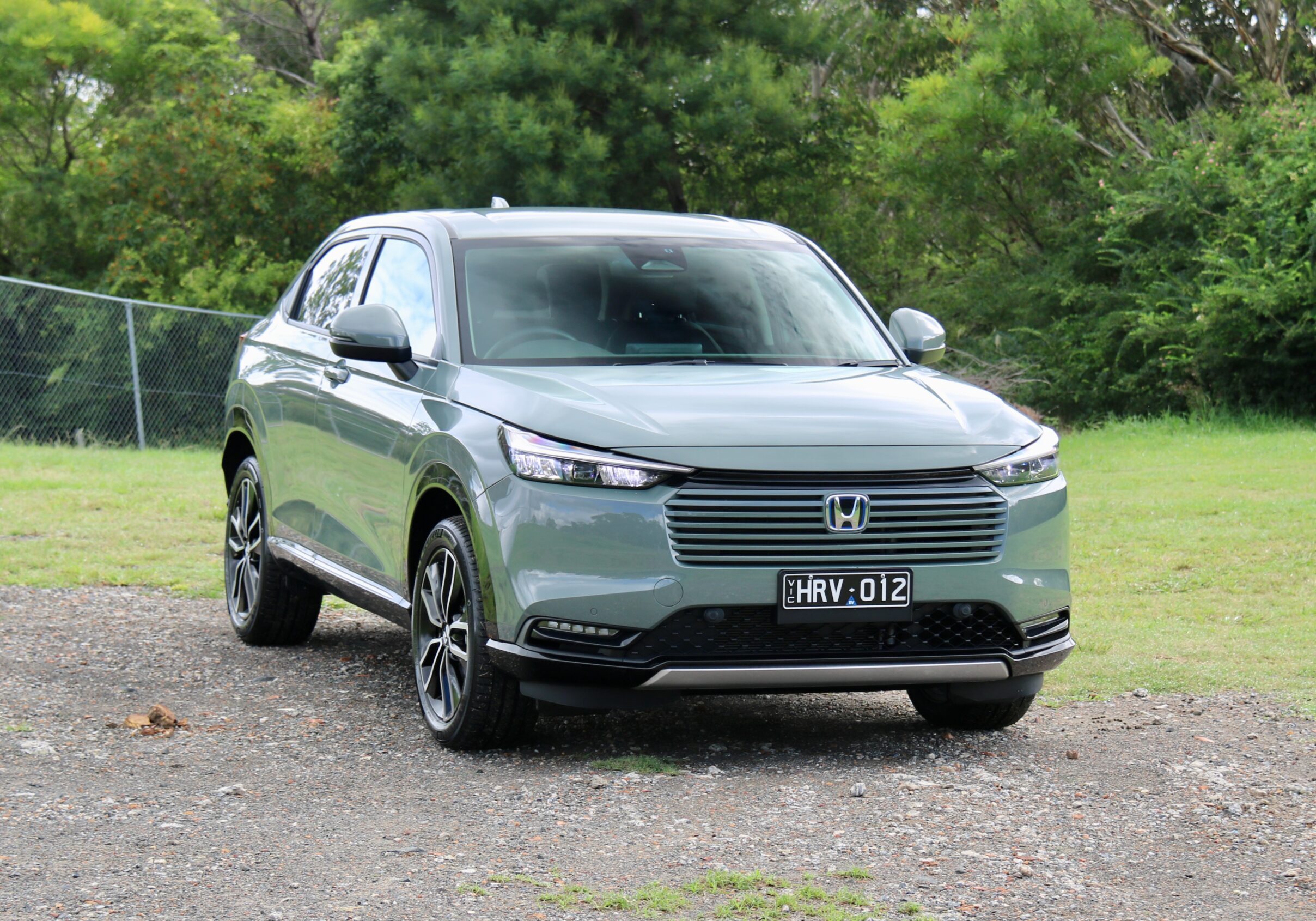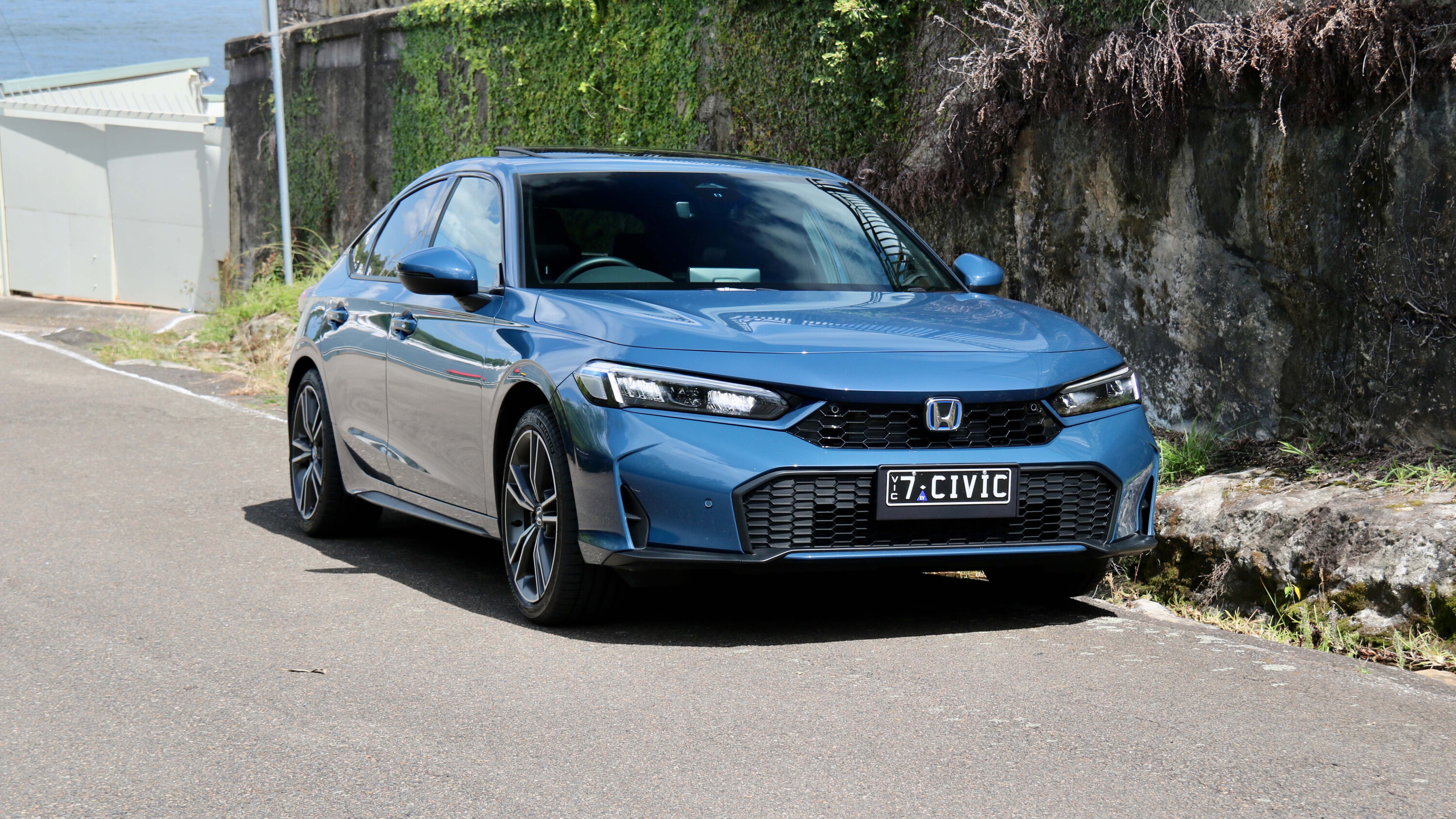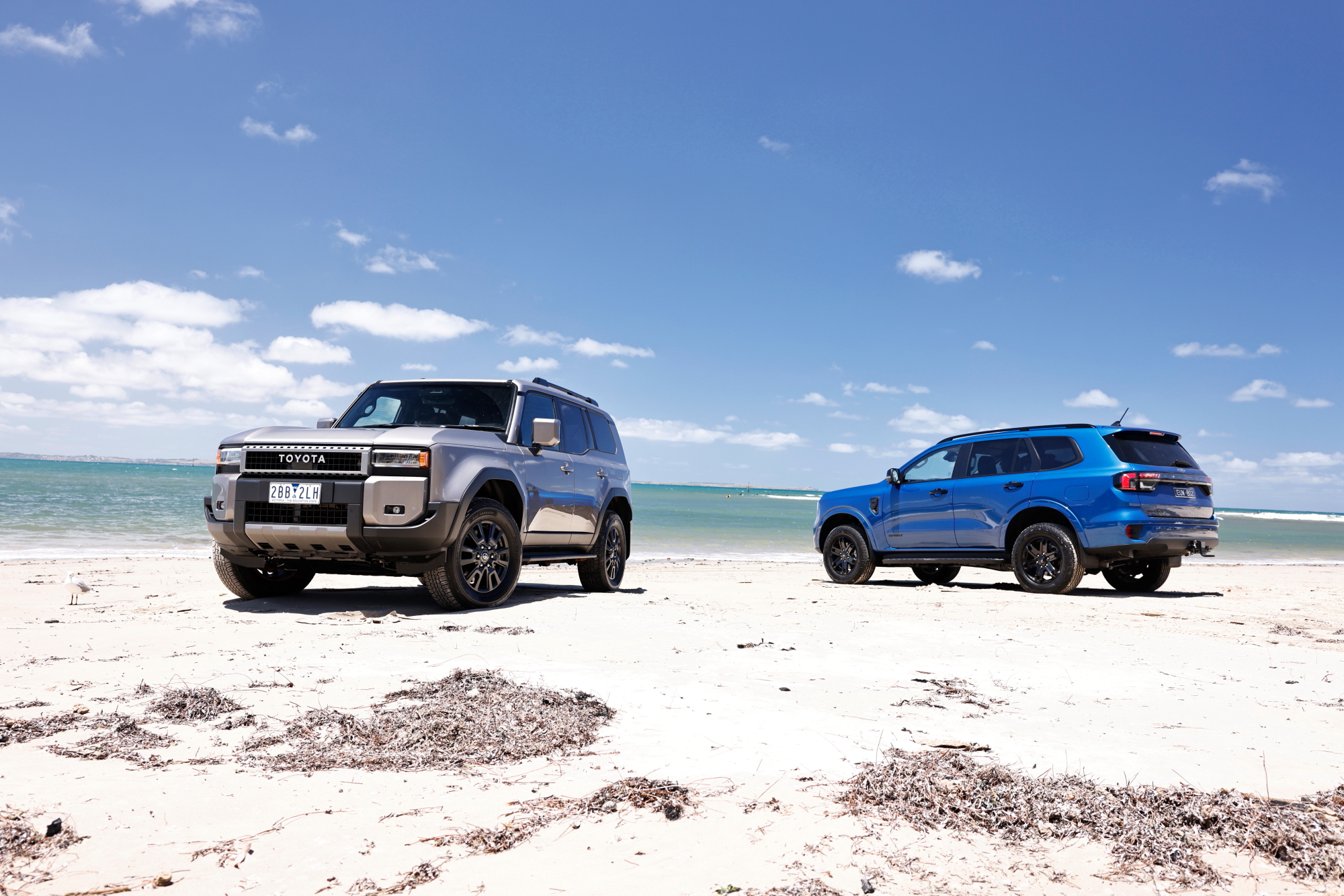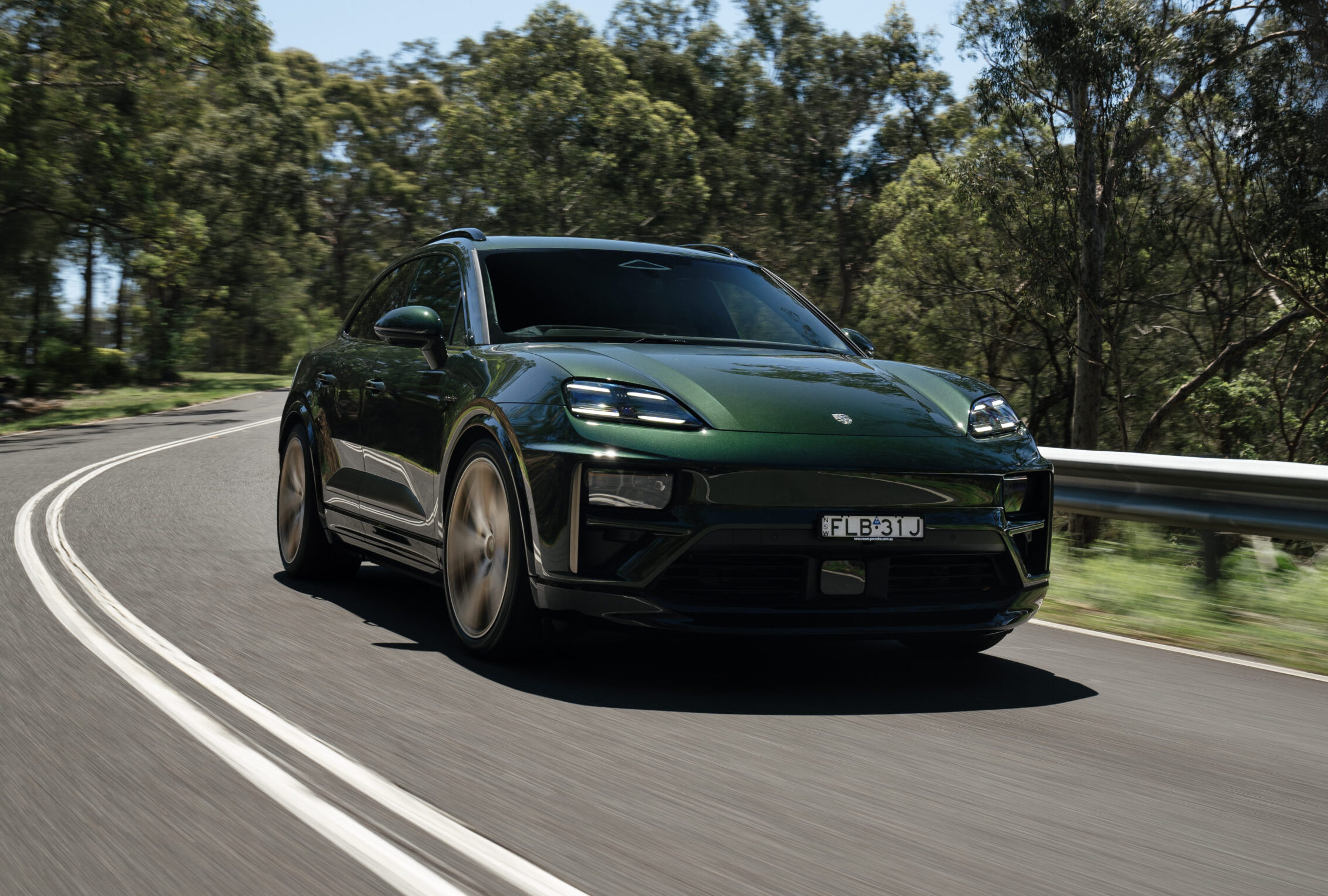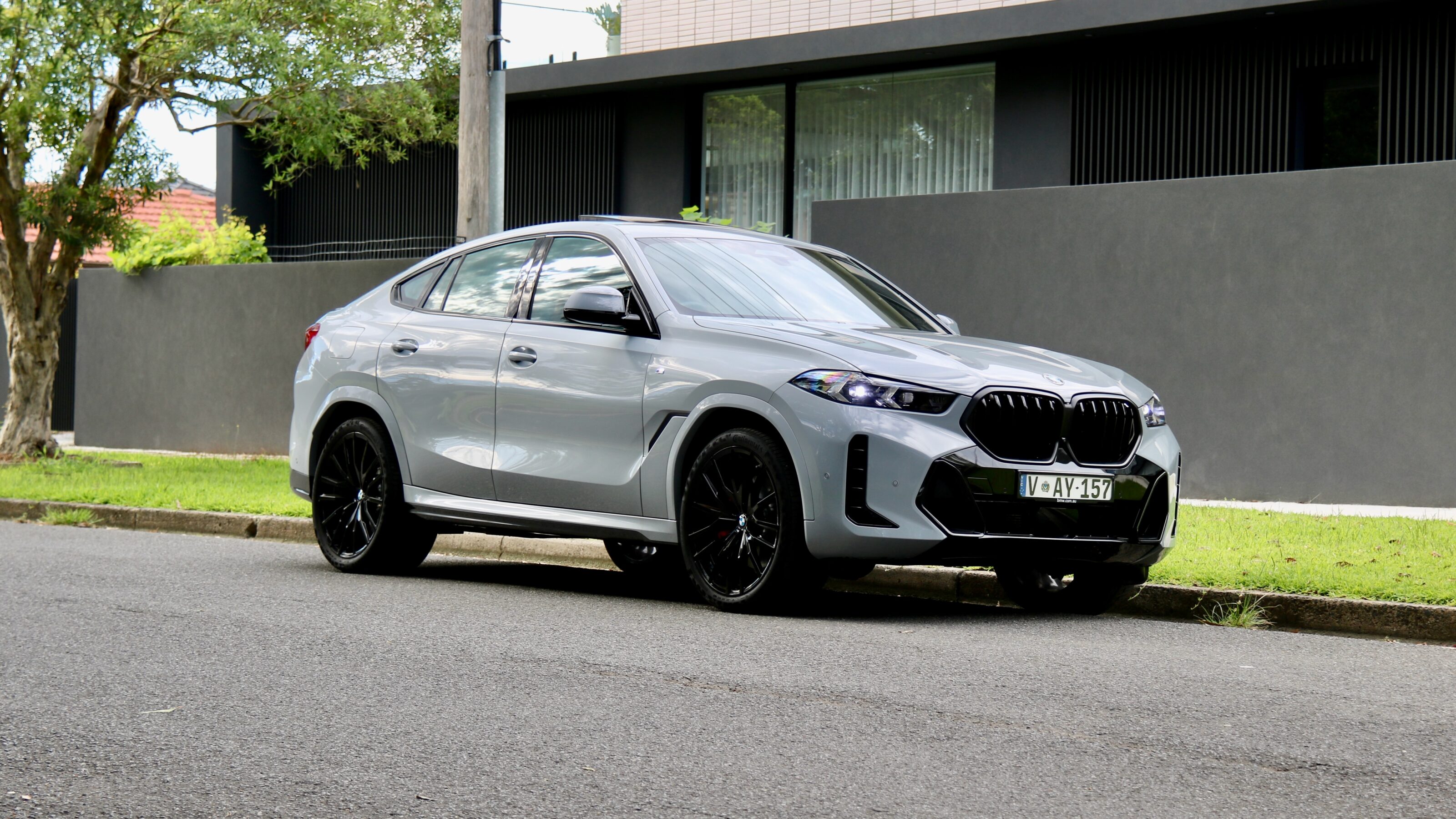Things we like
- Genius Magic Seats in the rear
Not so much
- Only a four-seater; underpowered petrol engine
Standing for “[H]igh-riding [R]evolutionary [V]ehicle”, the Honda HR-V was one of the first small SUVs on the Australian market when it made its debut in 1999. Now in its third generation, the HR-V has just been given a light mid-life update focusing on styling tweaks, some new equipment and – to address criticism about the pre-updated model – a new, cheaper mid-range hybrid trim level.
Pricing kicks off from $32,900 -– that’s drive away across Australia under Honda’s ‘one price promise’ program – for the only petrol model Vi X, with the new hybrid e:HEV X just sneaking under the $40k barrier at $39,900 drive away. The top-trim hybrid e:HEV L completes the lineup at $42,900 drive away and compared to the pre-updated car, pricing has fallen by up to $2,000.
Despite the price drop, the update delivered new features including wider-ranging safety features like traffic jam assist, live services with the ‘Honda Connect’ smartphone app, a leather steering wheel for the Vi X and Matrix adaptive high beam for hybrids.
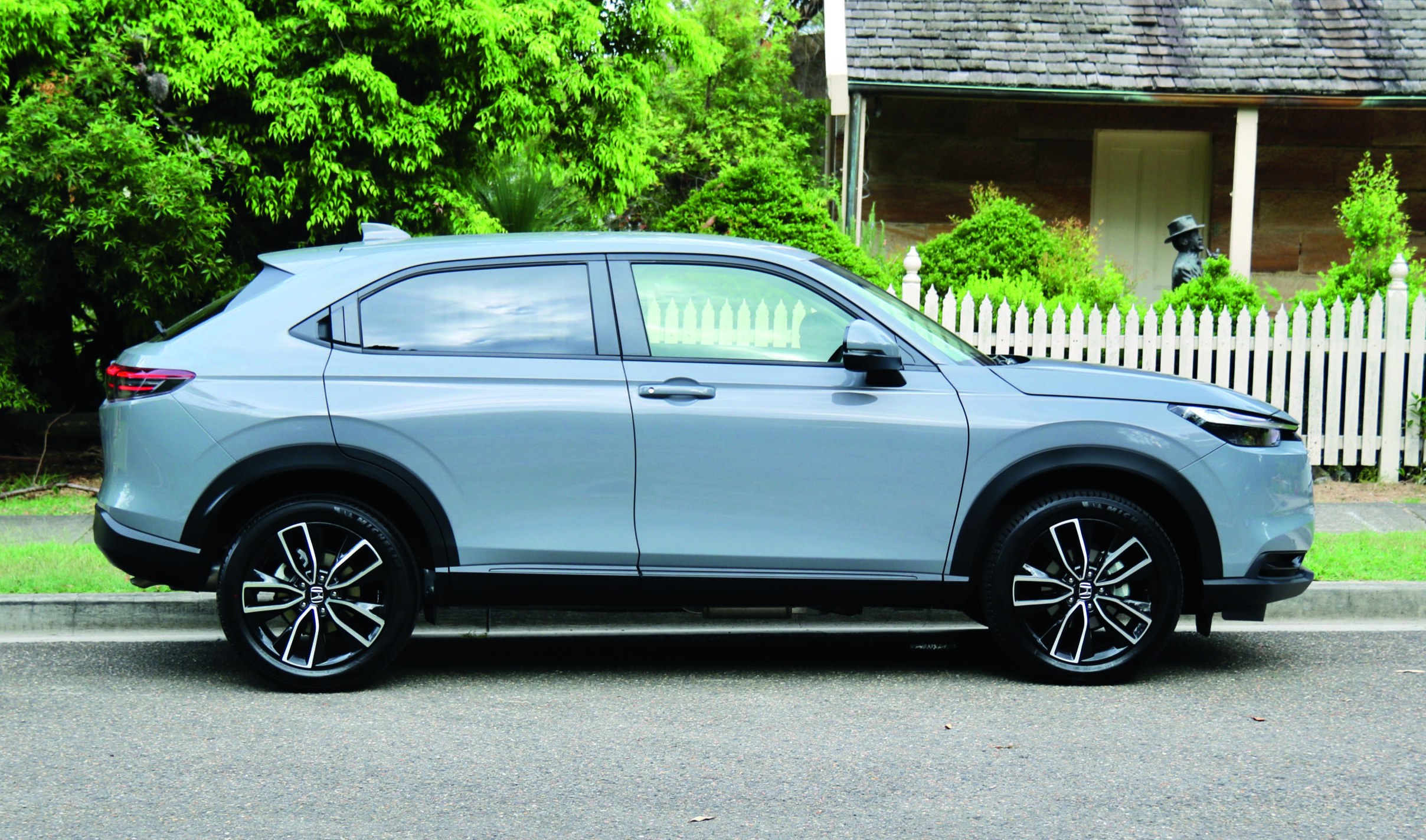
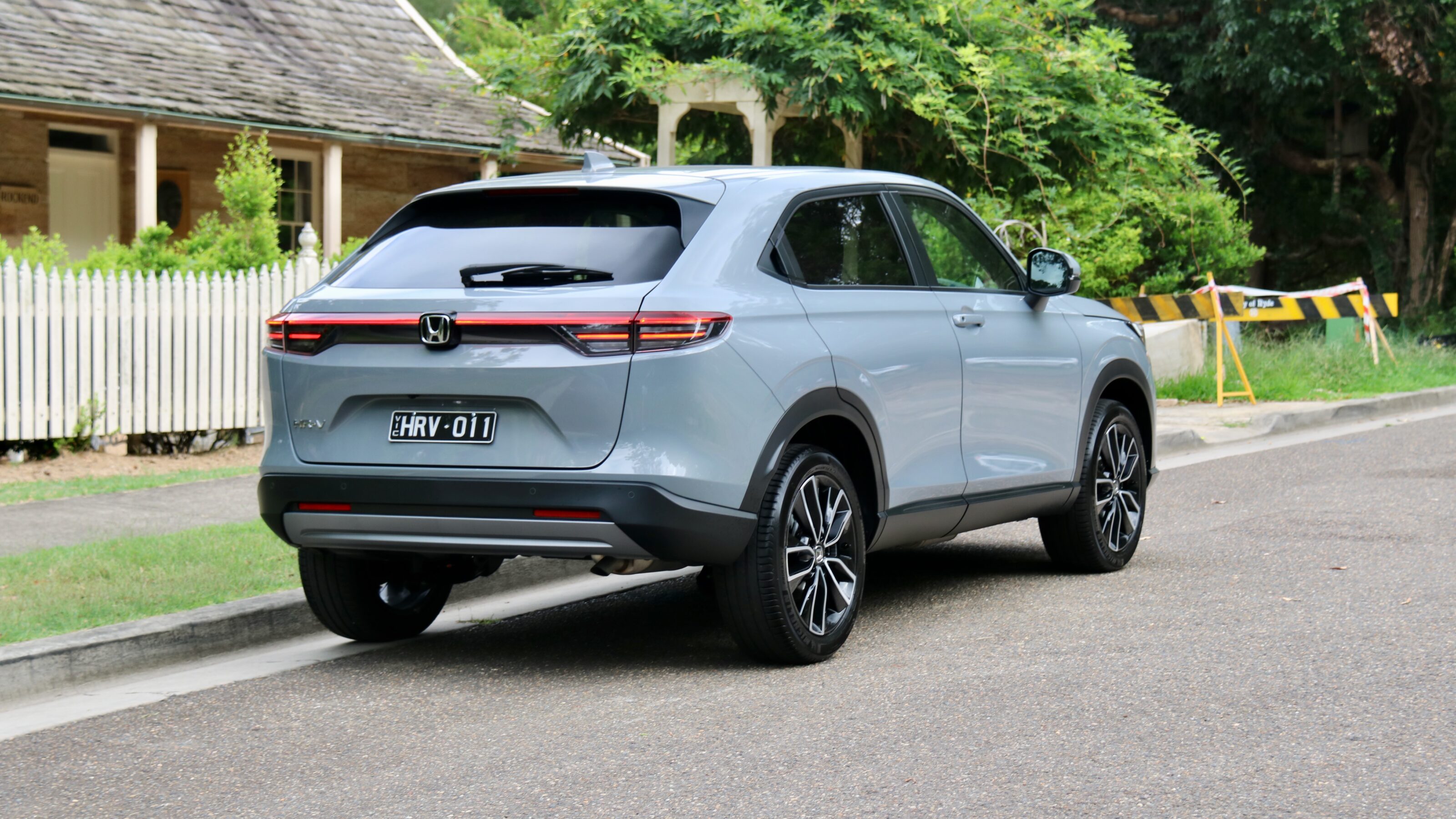
Equipment levels are otherwise healthy with kit such as 18-inch wheels, keyless entry and push button start, automatic climate control, a 9.0-inch touchscreen with sat-nav, wireless Apple CarPlay (though Android Auto is curiously still only wired) and safety kit like AEB, adaptive cruise control, adaptive lane guidance and a reversing camera.
The new e:HEV X adds blind-spot monitoring with rear cross-traffic alert, adaptive high beam, leatherette and cloth seat trim and heated front seats with the e:HEV L adding dual-zone climate control, rear air vents, auto-folding mirrors, auto wipers, an electric bootlid and a heated steering wheel. All up, it’s now better value for money though some features like a sunroof, electric seat adjustment and premium audio are still missing.
Like the pre-updated model, the facelifted HR-V is still a four-seater, which may or may not matter to you. While we’re moaning, there’s no spare wheel across the range either.
Under the bonnet are two 1.5-litre drivetrains: an 89kW/145Nm petrol or a 96kW/253Nm hybrid. Both are mated to a CVT automatic transmission, with claimed combined fuel consumption of 6.2L/100km for the petrol and 4.3L/100km for the hybrid – in the real world, we averaged 7.4L/100km in the petrol and 4.7L/100km in the hybrid.
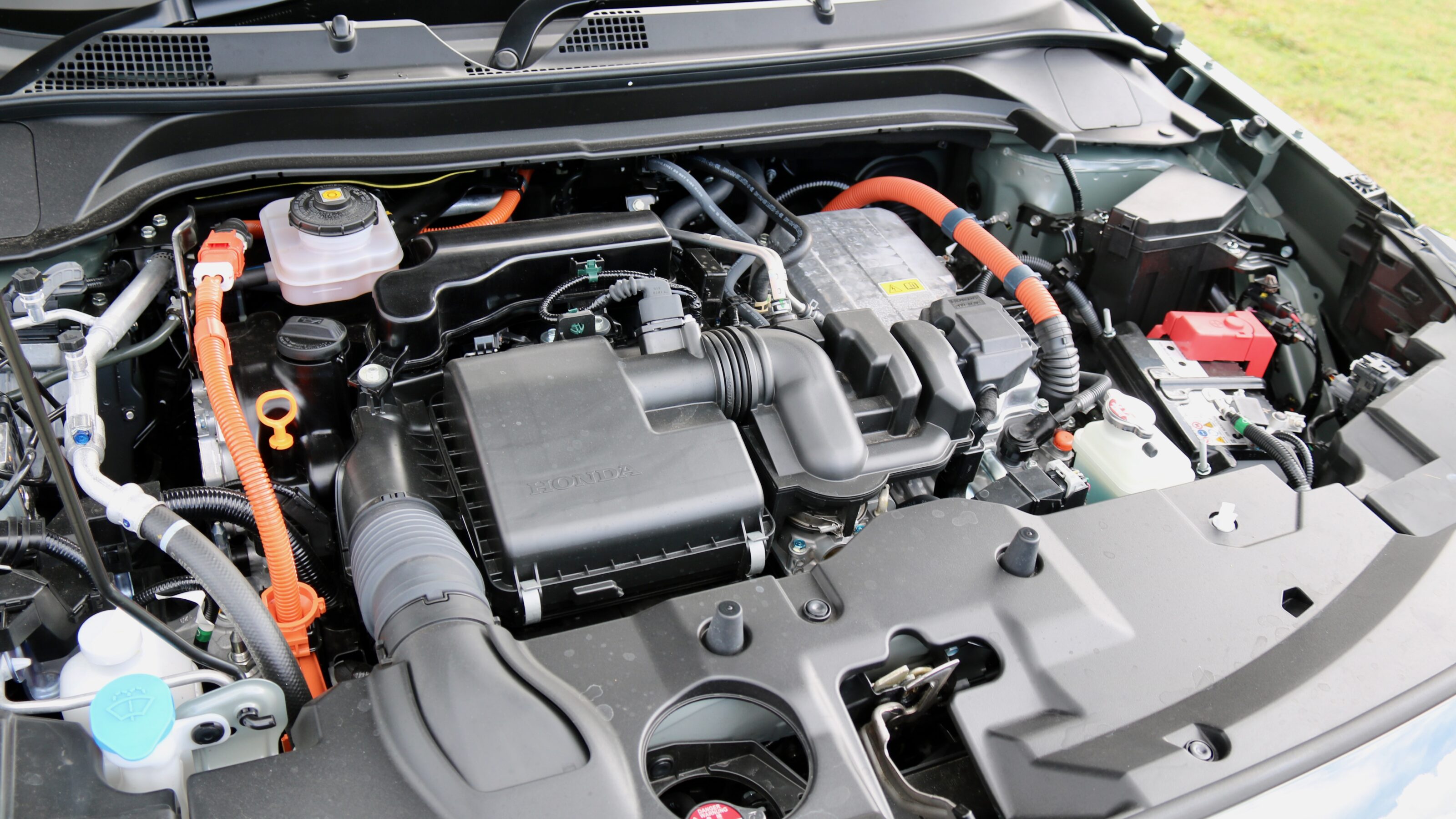
For more than just its excellent fuel efficiency, the hybrid is the clear pick of the updated HR-V range: it’s more refined and punchier, justifying the extra cost (which also includes extra features).
According to Honda, the hybrid drivetrain has been improved with better refinement and a smoother handover between petrol and electric power. In reality, the changes are barely noticeable but it remains one of the best hybrid systems on the market, especially with the transmission’s stepped ratios. Because of that – and unlike a Toyota hybrid – mashing the throttle in the HR-V hybrid doesn’t result in constant high-rev noise until you’re up to speed.
Honda also says that the HR-V hybrid’s dampers have been retuned and it’s not wrong as there’s a greater degree of compliance compared with the pre-updated model, though larger bumps can still upset it a bit. It’s a good handler for the segment, with nicely-weighted steering and a tight chassis.
The cabin of the HR-V hasn’t changed much, but it didn’t really need to: there’s a new centre console tray design for a smartphone – though a wireless charger remains a dealer-fit accessory – and new faster-charging USB-C ports have also been fitted. The 9.0-inch touchscreen adopts live services and remains breathtakingly easy to use. Quality is solid with soft touch dashboard and door trims and lovely switchgear like the leather steering wheel.
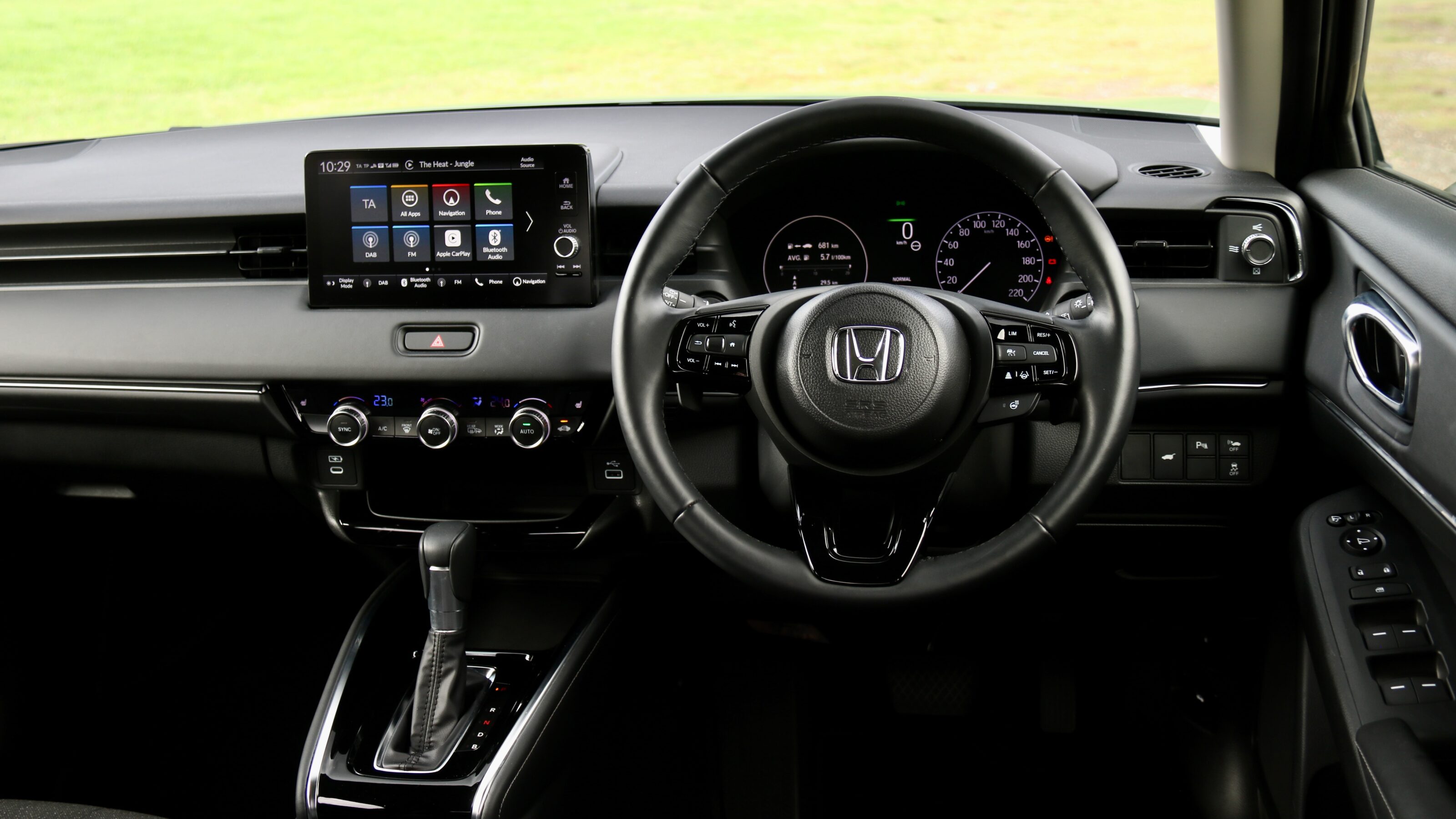

Aside from the lack of a fifth seat locally, the HR-V’s rear seat is arguably the best in class with ample legroom and headroom, and amenities like a central arm rest, bottle holders in the doors and – unfortunately in the top-spec hybrid only – rear air vents and two USB-C ports. But uniquely, Honda’s ‘Magic Seats’ allow the seat base to fold up or fold completely flat for trips to Ikea, expanding the average 304-litre boot to a large 1,274L, or more than Kona and CX-30.
All things considered, the updated Honda HR-V remains one of the best choices in the small SUV segment. Subtle updates have made it safer, better equipped and more refined to drive than before, while the hybrid’s real-world efficiency, stepped ratio gearbox and peppy performance are awesome. The lack of a fifth seat and spare wheel grates, but it’s otherwise very practical and if they’re a non-issue to you, the HR-V still presents great buying in the small SUV segment.
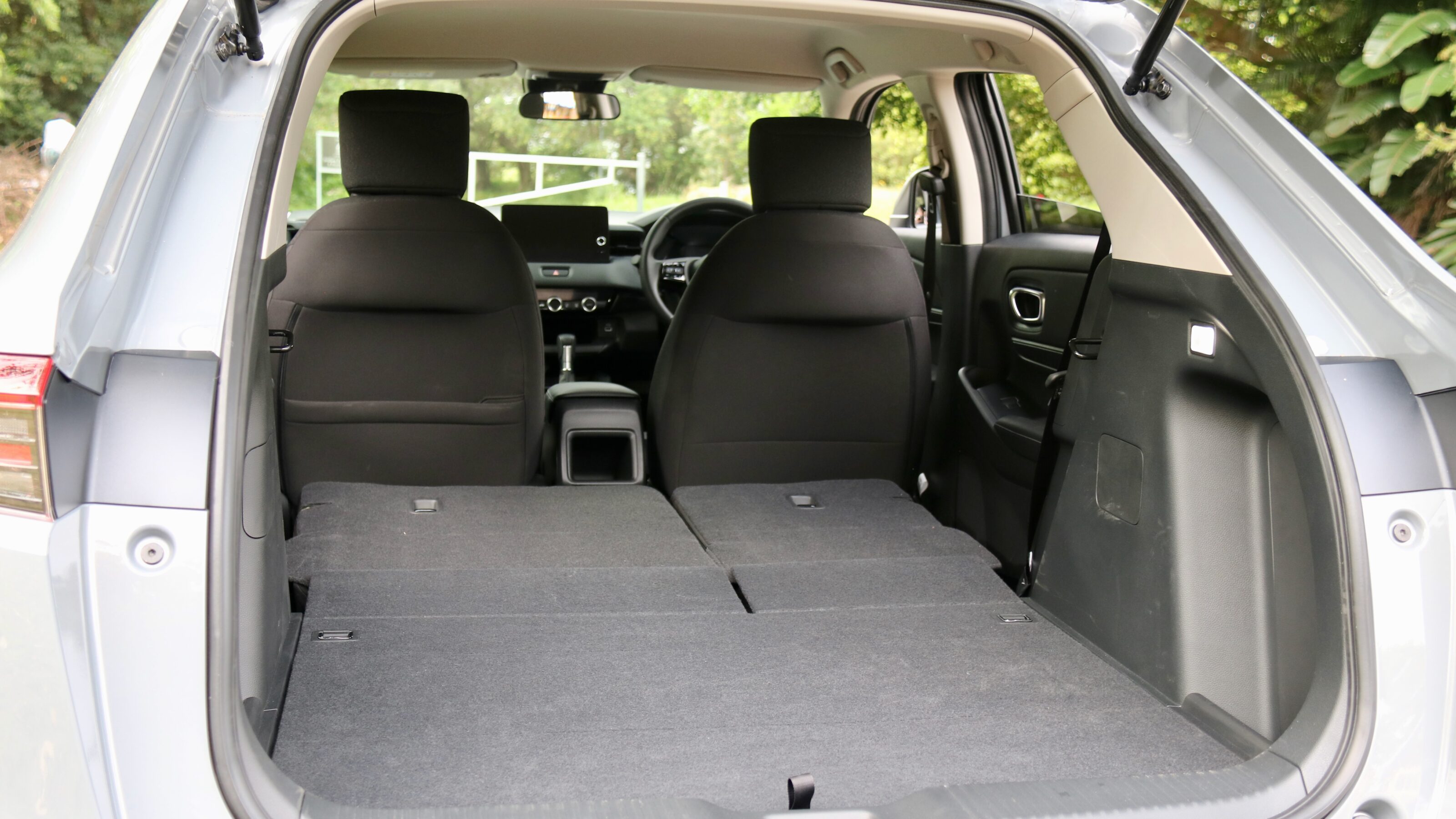
Essential specs
- Engine: 1498cc 4-cyl, DOHC, petrol or hybrid
- Max power: 89kW (petrol); 96kW (hybrid)
- Max torque: 145Nm (petrol); 253Nm (hybrid)
- Transmission: CVT automatic
- Economy: 4.3L/100km (hybrid); 6.2L/100km (petrol)
- Weight: 1267kg (petrol); 1382kg (hybrid)
- Price: from $32,900 drive away (Vi X); $42,900 (e:HEV L)
- On sale: Now
This article appears in the May 2025 issue of Wheels, on sale now.


